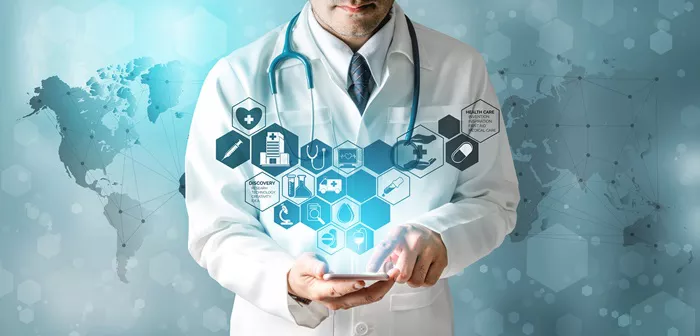As African hospitals grapple with overcrowding, particularly in rural regions, technological innovations are emerging as a beacon of hope, bridging the gap between limited healthcare resources and the continent’s vast population. The scarcity of health facilities and medical professionals has been a persistent challenge, with the United Nations reporting just one doctor for every 5,000 people across Africa, a continent shouldering 25% of the global disease burden.
However, the increasing penetration of mobile phones across Africa is enabling new digital health solutions that extend the reach of medical services to underserved areas. These innovations are helping to close the doctor-patient gap, bringing critical healthcare services closer to those in need.
Yaw Asamoah, the head of MedPharma Care in Ghana, is at the forefront of this digital revolution. His company has developed an app that facilitates face-to-face consultations between patients and doctors, as well as connections with pharmacies, allowing patients to receive medications directly at their homes. This approach is transforming the healthcare experience, offering more accessible and efficient services.
“MedPharma Care aims to digitize healthcare by incorporating telemedicine,” Asamoah explained. “Our platform allows for e-consultations, e-prescriptions, and remote diagnostics, ensuring that patients can receive care whether they’re at work or at home.”
The World Health Organization has highlighted the severe shortage of health personnel in Africa, with 36 of the 57 critically under-resourced countries located on the continent. The 2001 Abuja Declaration, which mandates African Union countries to allocate 15% of their annual budgets to health, remains largely unfulfilled, exacerbating the issue of access to quality healthcare.
Despite these challenges, digital tools are proving to be a potential solution, particularly in remote areas where medical professionals are scarce. Mountaga Keita, a Guinean entrepreneur, has developed three portable diagnostic terminals capable of monitoring vital signs such as temperature, blood pressure, and heart function, as well as conducting ultrasounds. These devices are designed to alleviate the strain on hospitals by enabling remote data collection and secure transmission to healthcare professionals for analysis.
“The advantage is the convenience it offers both doctors and patients,” Keita noted. “Instead of overcrowding hospitals, medical staff can use these devices to collect and securely send patient data to specialists, who can then provide a diagnosis without the need for physical hospital visits.”
Keita’s diagnostic kits have already been deployed in 40 hospitals across Guinea, with interest from other countries such as Gabon, which has requested six machines. He is also in discussions with the governments of Burkina Faso, Ivory Coast, and Senegal to expand the technology’s reach.
Keita emphasized that his technology not only addresses the doctor-patient ratio issue but also offers significant cost savings for patients. “This technology allows for secure transmission of vital patient data to specialists globally, from Tunisia to Tokyo. It helps determine whether expensive medical evacuations are necessary or if treatment can be managed locally.”
The COVID-19 pandemic has accelerated the adoption of telemedicine across Africa, drawing attention to its potential to ease the burden on healthcare facilities. Asamoah pointed out that telemedicine opens up access to specialized care that might otherwise be unavailable in many regions.
“Traditionally, getting an appointment with a specialist in Ghana can be challenging due to limited availability,” Asamoah said. “Telemedicine allows patients to book consultations with specialists more easily, ensuring they receive the care they need.”
A report by global consulting firm McKinsey & Company analyzed the impact of digital health tools in Kenya, Nigeria, and South Africa, projecting that these innovations could reduce the continent’s healthcare costs by 15% by 2030. As digital health continues to grow, it holds the promise of transforming Africa’s healthcare landscape, offering hope to millions who currently lack access to essential medical services.
[inline_related_posts title=”You Might Be Interested In” title_align=”left” style=”list” number=”6″ align=”none” ids=”11585,11581,11545″ by=”categories” orderby=”rand” order=”DESC” hide_thumb=”no” thumb_right=”no” views=”no” date=”yes” grid_columns=”2″ post_type=”” tax=””]
































